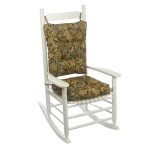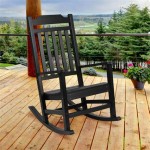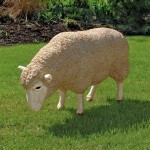Outdoor Ceiling Fan with Palm Leaf Blades: A Guide to Style, Function, and Selection
Outdoor spaces are increasingly becoming extensions of the home, demanding similar levels of comfort and style as interior living areas. A crucial element in achieving this is adequate ventilation and air circulation, particularly in warmer climates. An outdoor ceiling fan, specifically one featuring palm leaf blades, offers an aesthetically pleasing and functional solution. These fans not only provide a cooling breeze but also inject a tropical or relaxed vibe into patios, porches, and gazebos. This article explores the benefits, considerations, and selection process for outdoor ceiling fans with palm leaf blades.
The defining characteristic of these fans is, of course, the palm leaf blades. These blades are designed to mimic the natural shape and texture of palm fronds, often crafted from durable materials that can withstand the elements. While the aesthetic appeal is undeniable, the functionality and suitability for outdoor use are paramount. Therefore, meticulous consideration must be given to factors such as blade material, motor type, and overall construction.
Understanding the Advantages of Palm Leaf Blade Outdoor Ceiling Fans
Outdoor ceiling fans with palm leaf blades offer a distinct combination of practical benefits and aesthetic advantages. Their popularity stems from their ability to enhance both the comfort and the ambiance of outdoor living spaces.
First and foremost, these fans provide essential air circulation. By circulating air, they create a cooling breeze that can significantly reduce the perceived temperature, making outdoor spaces more comfortable during hot weather. This air movement also helps to deter insects like mosquitoes, which are often prevalent in outdoor environments. The rotating blades disrupt the still air, making it more difficult for these pests to navigate and land, thus improving the overall outdoor experience.
Beyond their functional advantages, palm leaf blades contribute significantly to the aesthetic appeal of outdoor spaces. The unique shape and texture of the blades evoke a tropical or relaxed atmosphere, enhancing the overall ambiance of patios, porches, and other outdoor areas. This visual element can complement various architectural styles and landscaping designs, creating a cohesive and inviting outdoor environment. The natural feel of the blades integrates well with outdoor surroundings, contributing to a sense of tranquility and relaxation.
Moreover, outdoor ceiling fans with palm leaf blades are generally designed for durability and longevity. Manufacturers typically employ weather-resistant materials and construction techniques to ensure that the fans can withstand exposure to rain, sun, humidity, and other environmental factors. This robust construction is essential for maintaining the fan's functionality and appearance over time, making it a worthwhile investment for enhancing outdoor living spaces.
Key Considerations When Selecting an Outdoor Palm Leaf Ceiling Fan
Choosing the right outdoor ceiling fan with palm leaf blades requires careful consideration of several factors to ensure optimal performance, durability, and aesthetic integration with the existing outdoor space.
Blade Material and Construction:
The material of the palm leaf blades is a crucial determinant of the fan's longevity and resistance to the elements. Common materials include ABS plastic, molded resin, and natural palm. ABS plastic and molded resin are engineered to withstand moisture, UV radiation, and temperature fluctuations without warping, cracking, or fading. Natural palm leaves, while aesthetically appealing, may require more frequent maintenance and treatment to prevent deterioration due to sun and moisture exposure. The construction of the blades, including their shape and balance, also affects the fan's air circulation efficiency and noise level. Well-balanced blades ensure smooth and quiet operation.Motor Type and Performance:
The motor is the heart of the ceiling fan, and its quality significantly impacts performance and lifespan. Outdoor ceiling fans typically utilize either AC (alternating current) or DC (direct current) motors. DC motors are generally more energy-efficient and quieter than AC motors, offering improved control over fan speed and airflow. Look for motors that are specifically designed for outdoor use and rated for damp or wet locations, depending on the level of exposure to the elements. The motor's size and power should be appropriate for the size of the area being cooled to ensure adequate air circulation.Size and Blade Span:
Selecting the appropriate fan size is critical for effective air circulation. The blade span, which is the diameter of the circle swept by the blades, should be proportional to the square footage of the outdoor space. A smaller fan may be sufficient for a compact patio or balcony, while a larger fan is necessary for a spacious porch or deck. Consulting a sizing chart or seeking expert advice can help determine the optimal blade span for a given area. Insufficient airflow can lead to inadequate cooling, while an excessively large fan may create an uncomfortable draft.Location Rating (Damp vs. Wet):
Outdoor ceiling fans are classified as either damp-rated or wet-rated, depending on their ability to withstand moisture exposure. Damp-rated fans are suitable for covered outdoor areas, such as patios or porches with a roof, where they are protected from direct rain and snow. Wet-rated fans are designed for locations that are directly exposed to the elements, such as gazebos or pergolas without a solid roof. Choosing the correct rating is essential for safety and preventing premature failure of the fan.Style and Finish:
The aesthetic appeal of the ceiling fan should complement the overall design of the outdoor space. Palm leaf blades are available in various shapes, sizes, and finishes, allowing for customization to match different architectural styles and landscaping themes. Common finishes for the fan housing and motor include bronze, black, white, and brushed nickel. Consider the existing color palette of the outdoor furniture, lighting fixtures, and architectural elements when selecting a fan finish to create a cohesive and visually appealing environment.Control Options:
Outdoor ceiling fans offer various control options, including pull chains, remote controls, and wall controls. Pull chains are the simplest and most basic control method, allowing users to adjust the fan speed and turn the light (if equipped) on or off. Remote controls provide greater convenience, allowing users to adjust the fan settings from a distance. Wall controls offer a more integrated and sophisticated option, allowing users to control the fan speed, light, and other functions from a dedicated switch mounted on the wall. Consider the user's preferences and the accessibility of the fan when selecting a control option.Lighting Options:
Many outdoor ceiling fans include integrated lighting fixtures, providing both illumination and air circulation. The lighting fixture can range from a single downlight to multiple lights with adjustable brightness and color temperature. Consider the lighting requirements of the outdoor space when selecting a fan with a light. Dimmable lights allow users to adjust the brightness to suit different activities and moods. Ensure that the lighting fixture is also rated for outdoor use and can withstand moisture exposure.Installation and Maintenance of Outdoor Palm Leaf Ceiling Fans
Proper installation and regular maintenance are crucial for ensuring the safe and long-lasting operation of an outdoor ceiling fan with palm leaf blades. Incorrect installation can lead to performance issues, safety hazards, and premature failure of the fan.
Professional Installation:
Unless experienced with electrical work and ceiling fan installation, hiring a qualified electrician is highly recommended. A professional electrician can ensure that the fan is properly wired, securely mounted, and meets all applicable safety codes. They can also assess the structural integrity of the ceiling and make any necessary modifications to support the weight of the fan. Incorrect wiring can lead to electrical shocks or fires, while an improperly mounted fan can fall and cause serious injury.Mounting Considerations:
Outdoor ceiling fans require a sturdy and properly rated mounting system. The mounting bracket should be securely attached to a ceiling joist or other structural member that can support the weight of the fan. Using an appropriate downrod, the metal pole connecting the fan to the mounting bracket, is crucial for achieving the optimal distance between the fan and the ceiling. In general, a downrod length of 12-18 inches is recommended for ceilings that are 8-9 feet high. Higher ceilings may require a longer downrod to ensure adequate air circulation. Make sure the downrod is rated for outdoor use and resistant to corrosion.Regular Cleaning:
Dust and debris can accumulate on the fan blades and motor housing, reducing the fan's efficiency and potentially causing it to overheat. Regular cleaning is essential for maintaining optimal performance. Use a soft cloth or brush to wipe down the blades and housing at least once a month or more frequently in dusty environments. For stubborn dirt or grime, a mild soap solution can be used. Ensure that the fan is turned off and unplugged before cleaning. Avoid using abrasive cleaners or solvents, as they can damage the finish.Blade Balancing:
Over time, the fan blades may become unbalanced, causing the fan to wobble or vibrate. This can lead to excessive noise and potentially damage the motor. Use a fan balancing kit, which typically includes small weights that can be attached to the blades, to correct any imbalance. Follow the instructions provided with the kit to determine the appropriate placement of the weights. If the problem persists, consult a professional electrician or contact the fan manufacturer for assistance.Inspection for Damage:
Periodically inspect the fan for any signs of damage, such as cracks, chips, or corrosion. Pay close attention to the blades, motor housing, wiring connections, and mounting hardware. Replace any damaged parts immediately to prevent further issues. If the fan exhibits any unusual noises or performance problems, contact a qualified electrician for diagnosis and repair.By carefully considering these factors and following proper installation and maintenance procedures, homeowners can enjoy the comfort and aesthetic benefits of outdoor ceiling fans with palm leaf blades for years to come. Choosing a fan that is both functional and visually appealing will enhance the outdoor living experience and create a more inviting and comfortable environment.

Tahiti Caribbean Tropical Indoor Or Outdoor Ceiling Fan Palm Leaf Paddle Blades Living Room New York By We Got Lites Houzz

Tropical Ceiling Fans Modern Palm Leaf At Lumens Com

Tropical Style Indoor Outdoor Ceiling Fan 44 In Palm Leaf Blades Bowl Light Kit

Elements Outdoor Ceiling Fan With Artificial Palm Leaf Blades Sanipex Group Uae

Dextrus 52 Inch Palm Leaf Ceiling Fans With Light And Remote Outdoor Tropical Fan 3 Speed Lights Colors Changing 5 Blades

Outdoor Tropical Ceiling Fan Oil Rubbed Broe Bombay By Gulf Coast Fans

Better Homes Gardens 52 Broe Ceiling Fan 5 Palm Leaf Blades Led Light Indoor Outdoor Walmart Com

Ceiling Fan 130 Cm Palma Palm Leaf Shaped Blades

52 Orison Outdoor Ceiling Fan With Lights Tropical Palm Leaf Di Smart Home

Home Decorators Collection Palm Cove 44 In Indoor Outdoor Led Natural Iron Ceiling Fan With Light Kit Downrod And Reversible Motor 51544 The








